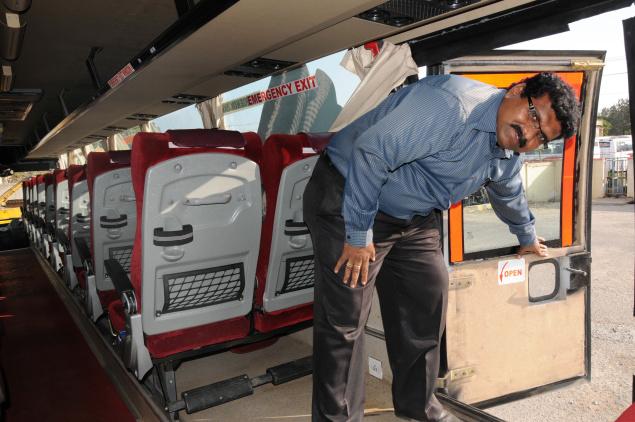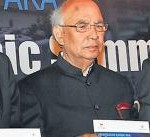 Nearly one-third of the Volvo fleet of Karnataka State Road Transport Corporation (KSRTC) have been fitted with the emergency exit door (third door) while the corporation is confident of covering the remaining coaches ahead of the February 20 deadline.
Nearly one-third of the Volvo fleet of Karnataka State Road Transport Corporation (KSRTC) have been fitted with the emergency exit door (third door) while the corporation is confident of covering the remaining coaches ahead of the February 20 deadline.
The State government mandated compulsory fitment of an ‘emergency door’, not an emergency exit, after two Volvos of a private company from Karnataka were involved in fire accidents near Mahbubnagar in Andhra Pradesh on October 30 and near Haveri on November 14 last year, claiming 45 and 7 lives respectively. Though the Transport Department had made emergency doors mandatory on monocoque coaches in 2008 and 2010, it was withdrawn in 2011.
KSRTC Managing Director N. Manjunath Prasad told The Hindu that about 150 Volvo coaches of Mark 1 and Mark 2 were already fitted with emergency doors on the right-hand side. It was done due to KSRTC’s insistence between 2006 and 2008, and the Transport Department’s two circulars that was effective till August 16, 2011. Bhaskar Rao, the then Director (Security and Vigilance) of KSRTC and later as State Transport Commissioner, had ensured emergency doors.
Mr. Prasad said the corporation would get the doors installed on the remaining 110 monocoque air-conditioned coaches much earlier to the deadline. The corporation is spending about Rs. 1 lakh per bus and the installation is being done at its regional workshops in Bangalore, Mysore, Mangalore and Shimoga.
Positioning
B. Mukkanna, Chief Mechanical Engineer, said KSRTC would have to install emergency doors on 60 buses on its own and is expecting Volvo Buses to get them installed on the remaining 50 as they were procured recently. Half a row of two seats, just before the rear seats on the right-hand side of the coach, have to be removed to place the emergency door, Mr. Mukkanna said.
Divisional Mechanical Engineer (Volvo) B.S. Nagaraja Murthy, who is overseeing the installation, said two days are required to install one door. The work includes dismantling the glass, cutting open the body structure, strengthening of the structure and re-fixing of the glass to get a 31” wide and 58” tall emergency door.
While conventional six-wheel Volvo buses have the door in the middle, the multi-axle buses have it in the rear for structural safety, Mr. Murthy explained. He said presence of all other safety equipment, including hammers to break open glass panes and fire extinguishers inside the coach is constantly being ensured.
North West KRTC, which has 20 Volvo buses is yet to get emergency doors installed and is planning to approach KSRTC for the same, said its Managing Director Umesh H. Kusgal. On the other hand, North East KRTC does not have Volvos in its fleet, but got two emergency doors installed on both the sides for two sleeper coaches, according to its Chief Mechanical Engineer B.C. Ramesh.


